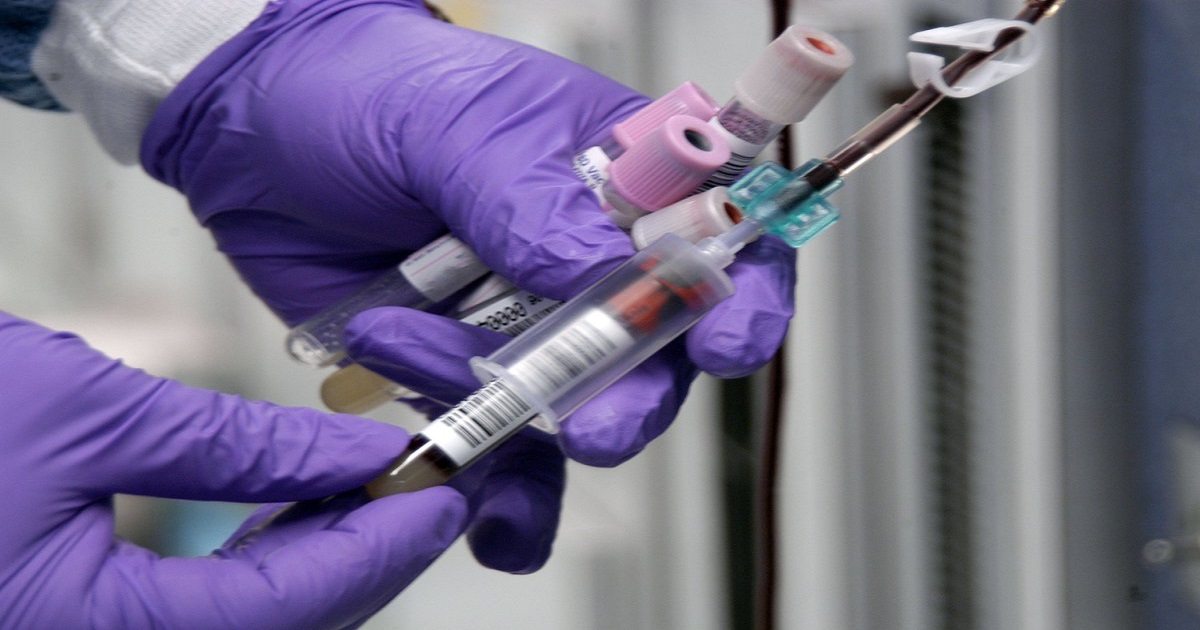Month: December 2016

21st Century Cures Act Could Get Effective Mesothelioma Drugs to Patients Faster
In October, MesotheliomaHelp reported on the millions of dollars allocated through the 2017 Defense Appropriations Bill for research into mesothelioma and other cancers. Now, through the 21st Century Cures Act, the U.S. government has allocated billions more to ensure Americans have the resources necessary to target many of the top medical issues today.
In a Nov. 30 press release from The White House, the Press Secretary reports that in addition to monies set aside to respond to the growing heroin and prescription opioid epidemic, to improve mental health, and to tackle Alzheimer’s, nearly $5 billion has been allocated to fight cancer. This includes $1.8 billion in new resources to transform cancer research and accelerate discoveries towards the Moonshot Initiative, and close to $3 billion towards the President’s Precision Medicine Initiatives, among other initiatives to improve health.
“This bill makes desperately needed changes to bring our laws into a modern era of medicine and to keep our nation at the forefront of health care innovation, by streamlining regulation to deliver new therapies to all patients,” said Congressman Michael C. Burgess, M.D. (R-TX), Chairman of the House Energy and Commerce Subcommittee on Commerce, Manufacturing and Trade in a Nov. 30 press release announcing the passage.
A statement from the Energy and Commerce Committee announced, “The House again overwhelmingly passed the 21st Century Cures Act on November 30, 2016. Next Stop: U.S. Senate.”
Expert Insight
“The 21st Century Cures Act: An innovation game-changer, a once-in-a-generation, transformational opportunity to change the way we treat disease.”
According to the Energy & Commerce Committee, the Act helps advance new therapies for patients by:
- Modernizing clinical trials and the means by which safety and efficacy data is accumulated and analyzed.
- Supporting broader, more collaborative development, qualification, and utilization of biomarkers, which help assess how a therapy is working, and on whom, earlier in the process.
- Streamlining regulations and provides more clarity and consistency for innovators developing health software and mobile medical apps, combination products, vaccines, and regenerative medicine therapies.
- Providing FDA with $500 million for regulatory modernization and give the agency the ability to recruit and retain the best and brightest scientists, doctors, and engineers.
“With today’s overwhelming bipartisan vote, we took a giant leap forward on the #Path2Cures,” said Energy and Commerce Committee Chairman Fred Upton (R-MI) and Rep. Diana DeGette (D-CO), co-authors of the bill on Nov. 30. “21st Century Cures is the innovation game-changer that patients, their loved ones, and the nation’s researchers and scientists so desperately need. The White House has expressed its enthusiastic endorsement of this critical legislation.”
Mesothelioma is diagnosed in close to 3,000 Americans each year. There is no cure for the asbestos-caused cancer and survival is often less than 18 months after diagnosis. Many patients turn to clinical trials after all other treatments have failed, but trial regulations slow the lab-to-patient process considerably, preventing the majority of patients from accessing new drugs.
The 21st Century Cures Act aims to change this by streamlining clinical trials, providing more resources to support cutting-edge research, and helping young researchers.
Sources:
- The White House
https://www.whitehouse.gov/the-press-office/2016/11/30/statement-press-secretary-hr-34-21st-century-cures-act - Energy and Commerce Committee Chairman
https://energycommerce.house.gov/news-center/press-releases/breaking-game-changer-curesnow-passes-house - Congressman Michael C. Burgess
http://burgess.house.gov/news/documentsingle.aspx?DocumentID=398210

2016 Reflections: What If There Was No Mesothelioma?
As the year draws to a close, it is a great time to reflect. It is a time to look forward with renewed hope for the coming year, but also to remember those who have been introduced to the mesothelioma community and the ones who have lost their fight.
Looking back on another full year without my Dad, I can’t help but wonder what my experiences over these last 365 days would have been like if he had been here. Birthday parties, holidays, and all of my memories with my now two year old daughter, would have been much sweeter with his smile present. Even my hardest times this year would have seemed more manageable with his calming demeanor and always perfect advice.
I know that I’m not the only person who feels this way. Countless others are asking themselves the “what-if” question that I grapple with every day. “What-if” Dad had been here for my little one’s first time at her music class? “What-if” Dad had been here for our fundraising events? “What-if” Dad had never been diagnosed with mesothelioma in the first place? These are hard questions to ponder; they have no tangible answer right now.
As I look forward, I know that I will always struggle with the loss of my father. Even so, I have to keep the faith that a cure for this cancer is right around the corner. With faith in God and the help of doctors, researchers, and regular supporters like myself, we can conquer this disease. Let’s work together to make 2017 the year where mesothelioma comes to an end. God bless you and have a peaceful, happy New Year!

Targeting the “Cellular Post Office” May Halt Mesothelioma Growth
One of the most critical breakthroughs needed to slow the number of patients dying from aggressive cancers, including lung cancer and mesothelioma, is to find an effective way to stop the cancer cells from dividing and migrating to other organs. Once cancer metastasizes, the battle to save the patient is significantly more challenging. Now, researchers from England and the U.S. have joined forces to find a way to stop this cancer growth, and they report that it is the “cellular post office” that should be targeted.
Researchers at the University of York and the University of Texas MD Anderson Cancer Center came together to find a way to halt the growth of lung cancer by looking at a key line of communication among cancer cells. The “cellular post office,” or the Golgi apparatus, gathers proteins into a ‘package’ (vesicles) and transports them to areas outside of the cells, thus allowing cancer to metastasize and grow.
The researchers identified two proteins, PAQR111 and Zeb1, that communicate allowing the cancer cells to break free from the lungs and travel throughout the body. The communication takes place in the Golgi, according to a Nov. 24 press release from the University of York.
“Now that we recognise this system, there is the potential to develop a drug that interferes with this communication and prevents the Golgi apparatus from facilitating the movement of the membrane sacks,” said Dr. Daniel Ungar, from the University of York’s Department of Biology, in a Nov. 24 press release from the University of York.
Pleural mesothelioma, a cancer of the lining of the lungs caused by past asbestos exposure, is one cancer that is highly aggressive and spreads quickly to other sites. Survival is typically one year after diagnosis. Research shows that metastasis is the cause of nearly 90 percent of cancer deaths, making it critically important that researchers fully understand how to stop metastasis to increase survival in mesothelioma patients.
See the Nov. 21 issue of The Journal of Clinical Investigation for the full study.

Mesothelioma Nurse Thinks That Laughter Can Be the Best Medicine
“Laughter is the best medicine.” The origin of this quote is thought to be the Old Testament Proverbs 17:22, “A joyful heart is good medicine. But a broken spirit dries up the bones.” The role of laughter in helping people feel better has long been held to be true. When dealing with mesothelioma and all the treatments, there is often not much to laugh about. Patients are told to remain positive, but this is often very difficult.
How important is a good, hearty laugh? According to research, laughter can affect us both physically and emotionally. Physically, laughter can increase our intake of oxygen, stimulates our heart, lung and muscles, and increases the endorphins released by the brain. Laughter can give you a relaxed feeling by activating your stress response and soothing tension by stimulating circulation and reducing some of the physical symptoms of stress.
One of the most important effects of a good laugh is on the immune system. The important role that the immune system plays in health and disease is being explored and there are many opportunities for targeting the immune system for future treatment of diseases. Laughter helps the immune system by releasing neuropeptides that help fight stress. Laughter can also relieve pain by causing the body to produce its own natural painkillers.
Author Norman Cousins, in his book “Anatomy of an Illness,” noted that 10 minutes of laughter, watching a funny movie or TV show, allowed him two hours of pain-free sleep.
A study from the University of Kentucky showed that in a group of women who laughed at a funny movie, those who had laughed out loud had higher levels of natural killer cell activity to help fight diseases, compared to the group who quietly watched.
There isn’t too much downside to laughing. The diagnosis of mesothelioma is not a laughing matter, but trying to find the humor in certain situations can help your overall physical and mental health.
As Dick Van Dyke sang in Mary Poppins, “I love to laugh, loud and long and clear. I love to laugh it’s getting worse every year. The more I laugh the more I fill with glee, and the more the glee, the more I am a merrier me.”
Know more about Mesothelioma and how you can deal with it.

New Blood Test for Lung Cancer May Guide Mesothelioma Treatment
In September, MesotheliomaHelp reported German researchers found that liquid biopsies can be used tomonitor lung cancer patients’ response to treatment in real-time. Now, another team of researchers report a blood test may be useful for identifying “how well and how long a patient might respond to chemotherapy.” For mesothelioma patients who also stand to benefit from this finding, this can mean the difference in their survival.
Researchers from the Cancer Research UK Manchester Institute set out to find a way to distinguish whether cancer cells would be chemosensitive, responsive to chemotherapy, or chemoresistant, resistant to the treatment in small-cell lung cancer (SCLC) patients. Like pleural mesothelioma, a cancer caused by past asbestos exposure, SCLC is highly aggressive requiring an equally aggressive treatment, but finding the correct anti-cancer agent is critical.
The researchers examined the circulating tumor cells (CTCs), cancer cells that breakaway and escape into the bloodstream where they circulate and migrate to other organs in the body, in over 30 patients with SCLC. The researchers discovered “patterns of a genetic fault” were linked to how well the selected chemotherapy would work. The team identified a classifier that correctly assigned 83.3% of the cases as chemorefractory or chemosensitive.
“Unfortunately, we have very few treatment options for patients with SCLC, and none at all for those whose cancer is resistant to chemotherapy,” said lead researcher Professor Caroline Dive in a Nov. 21 press release from Cancer Research UK Manchester Institute at The University of Manchester. “Our study reveals how blood samples could be used to anticipate how lung cancer patients may respond to treatments.”
http://www.cruk.manchester.ac.uk/news?newsId=146
Often called “asbestos cancer,” mesothelioma is highly aggressive and is resistant to many standard cancer treatments. Currently, there is no known cure for mesothelioma, and the average survival time varies from 4 – 18 months after diagnosis. Patients with lung cancer and mesothelioma often undergo the same treatment protocol, so a breakthrough like this brings hope to the the mesothelioma community.
“By identifying differences in the patterns of genetic faults between patients, we now have a starting point to begin to understand more about how drug resistance develops in patients with this aggressive form of lung cancer.”
The full study can be found in the Nov. 21 issue of Nature Medicine.
http://www.nature.com/nm/journal/v22/n3/full/nm.4041.html
Free Mesothelioma Patient & Treatment Guide
We’d like to offer you our in-depth guide, “A Patient’s Guide to Mesothelioma,” absolutely free of charge.
It contains a wealth of information and resources to help you better understand the condition, choose (and afford) appropriate treatment, and exercise your legal right to compensation.
Download Now